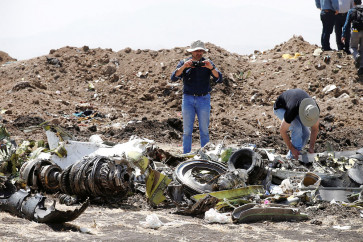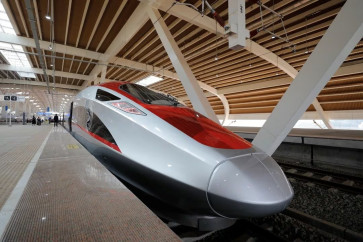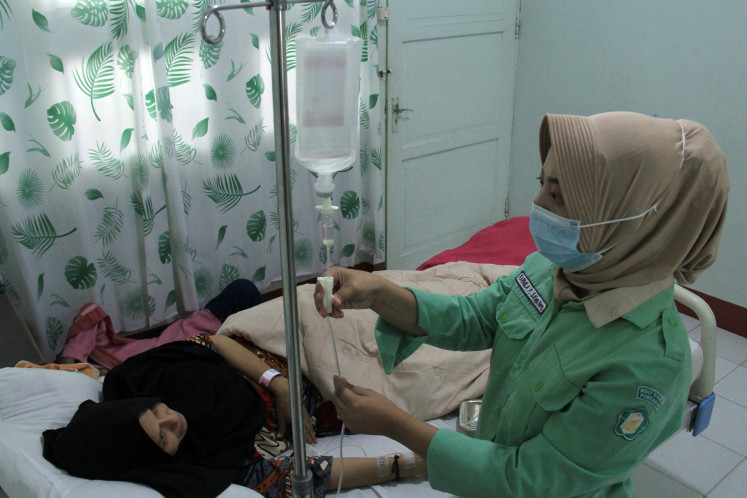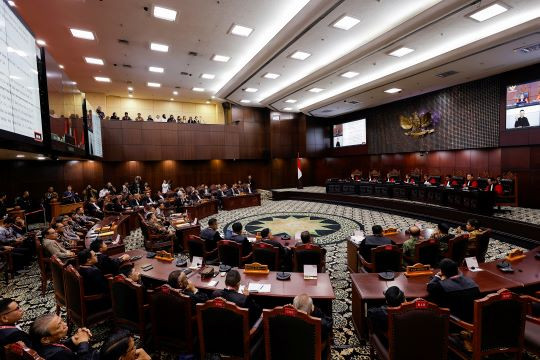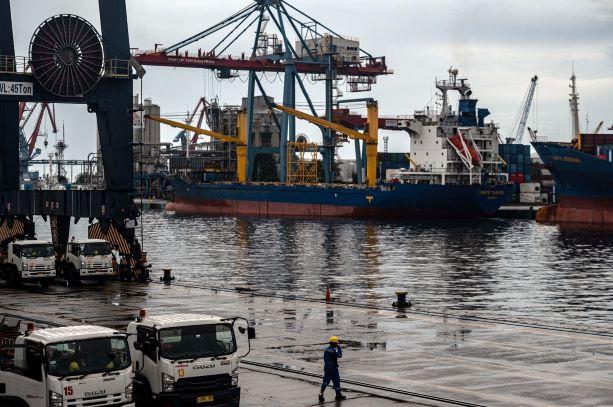The good, the bad and the ugly
Out of 47 listed firms under Bahana Securities' coverage (75 percent of market capitalization of the Indonesia Stock Exchange), four state firms (Telkom, PGN, Bank Bukopin and Adhi Karya) and three private ones (Bumi Resources, Tunas Baru Lampung and Kawasan Industri Jababeka) have yet to announce their last year's fourth quarter (4Q08) financial reports
Change Size

O
ut of 47 listed firms under Bahana Securities' coverage (75 percent of market capitalization of the Indonesia Stock Exchange), four state firms (Telkom, PGN, Bank Bukopin and Adhi Karya) and three private ones (Bumi Resources, Tunas Baru Lampung and Kawasan Industri Jababeka) have yet to announce their last year's fourth quarter (4Q08) financial reports.
Thus far, the market as a whole booked 4Q08 year-on-year operating profit growth of 12.9 percent, down from 25.5 percent in 3Q08. On the bottom line, supported by the 5 percent lower tax rate, net profits grew 30.6 percent year-on-year, representing a deceleration from the 57.2 percent year-on-year growth reached in 3Q08.
We classify the good sectors as those having reported constant or improving year-on-year operating and net earnings in 4Q08 on a year-on-year basis compared to 3Q08 levels. Only the coal sector fits this bill, helped by coal contracts coupled with coal prices which had been sticky on the way down.
However, we expect this to change in the subsequent quarters as coal prices have averaged US$72 per ton in 1Q08, down 22 percent quarter-on-quarter and 32 percent year-on-year. On the banks, the counters experienced relatively stable net interest margins (NIMs) fueled by strong loan growth.
It is worth noting that apart from Bank Mandiri and Bank Negara Indonesia, all other banks suffered from higher provisioning expenses in 4Q08. Thus, in addition to these two sectors, we also found eight firms that stood out, having booked rising year-on-year 4Q08 operating and net profits: Mandiri, Indo Tambangraya, Kalbe Farma, Tempo Scan, Semen Gresik, Indocement, Wijaya Karya and Ciputra Surya.
The bad sectors are those which have reported either deceleration in terms of year-on-year operating growth or net profit growth in 4Q08, compared to 3Q08 levels. This deceleration suggests their operating profit growth had peaked in 3Q08 and could further deteriorate going forward. This category included telcoms, oil & gas, cement, property and the consumer sectors.
Even the defensive consumer sector was hurt by rising raw materials prices in 3Q08 for their 4Q production. Worth noting is that the cement sector which was pulled down somewhat by Holcim's forex losses, otherwise would have reported a stellar performance, helped by efficiencies and falling oil prices.
The final category belongs to the sectors which booked negative year-on-year growth in their 4Q08's operating and net earnings. The new comers in this category are infrastructure-related while plantations and mining sectors have remained in this worst section since 3Q08.
We believe they will remain here through to the 3Q09 results, which would only be released end-October 2009. The plantation sector reported squeezed margins due to lower CPO prices which averaged US$440 per ton. For the mining firms, the fall in metal prices were exacerbated by the impact of higher fuel-related costs (some 40 percent of total costs of goods sold) on contracts.
For the infrastructure-related sector, operating profit growth was pulled down by the two toll-road firms Jasa Marga and Citra Marga Nusaphala on rising operating costs while construction companies like Wijaya Karya and Total Bangun Persada actually reported rising operating earnings, helped by falling raw materials prices.
Going forward, we expect shifts to occur. In 1Q09, we expect the banks to move from the "good" list to the "bad" list as the result of a slowdown in loan growth, coupled with higher provisioning costs.
In the coal sector, we also expect some deceleration to occur on the back of lower coal prices. In fact, we expect the earnings slowdown for the coal plays to intensify for the rest of the year. This means that in 1Q09 and 2Q09, only the defensive consumer sector would occupy the "good" list, helped by margin augmentation as their costs come down due to lower commodity prices.
Finally, we expect continued deceleration in growth to come from the commodity sectors as prices remain weak. In the subsequent quarters, we may see the oil & gas and the coal sector joining the "ugly" list.

